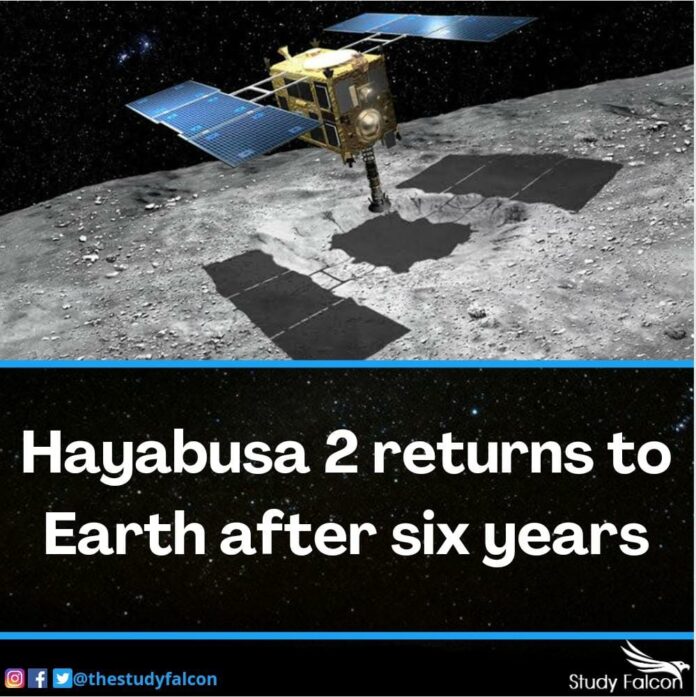Six years after Japan’s Hayabusa2 mission was launched, returned to Earth on December 6 2020 carrying with it samples from the one-kilometre wide Ryugu asteroid that orbits the Sun. Ryugu, also known as 1999 JU3, is a carbonaceous, or C-type, asteroid, which is thought to contain both organic materials and hydrates—minerals rich in chemically bound water. When similar asteroids pummelled a proto-Earth billions of years ago, they might have helped kick-start life by delivering the building blocks. The Hayabusa2 mission is said to be similar to NASA’s OSIRIS-REX mission that brought back samples from asteroid Bennu late in October. According to the Japanese Aerospace Exploration Agency (JAXA), this is the first time that a probe has visited a celestial body that is under 100 metres in diameter.
The Hayabusa2 arrived safely near Woomera a remote Australian military and civil aerospace facility that is also one of the largest land-based test ranges in the world on the 6th. Samples of both surface dust and material from below the surface, which was stirred up when the spacecraft had fired two impactors into the asteroid, were collected. The Hayabusa2 stored them in a separate sealed container that was detached from the craft about 220,000 km from Earth and subsequently landed in the Australian outback using parachutes.The Royal Australian Air Force tracked the 16 kg-container’s beacon in the wee hours of Sunday morning. The container was taken to a nearby facility for a quick analysis before being flown to Japan.
The Hayabusa2 mission was launched in December, 2014. The spacecraft arrived at the Ryugu asteroid in mid-2018 after which it deployed two rovers and a small lander onto the surface. In 2019, the spacecraft fired an impactor into the asteroid’s surface to create an artificial crater with a diametre of a little more than 10 metres, which allowed it to collect the samples. The mission seeks to answer some fundamental questions about the origins of the Solar system and where molecules like water came from. Hayabasu2’s predecessor called the Hayabusa mission brought back samples from the asteroid Itokawa in 2010.
Asteroids are rocky objects that orbit the Sun, much smaller than planets. They are also called minor planets. According to NASA, there are 994,383 known asteroids, the remnants from the formation of the solar system over 4.6 billion years ago. Ryugu is also classified as a potentially hazardous asteroid (PHA) and was discovered in 1999 and was given the name by the Minor Planet Center in 2015. It is 300 million kilometres from Earth and it took Hayabusa2 over 42 months to reach it. The aim to study asteroid is to look for information about the formation and history of planets and the sun since asteroids were formed at the same time as other objects in the solar system. Another reason for tracking them is to look for asteroids that might be potentially hazardous.










